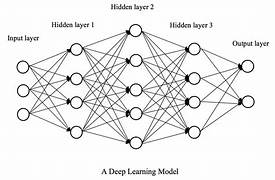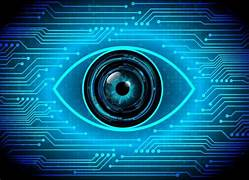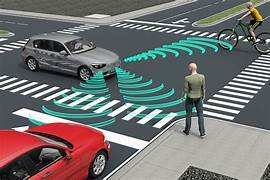What is Deep Learning?
The Obico team was the first to offer AI for 3D printing failure detection back as early as 2019. Since then, our AI has watched over 80 million hours of 3D printing and caught almost one million 3D printing fialures. Over the years, we have continued to improve our initial webcam based failure detection product and worked on a variety of new projects like our recent first-layer AI inspection that is currently in alpha testing.
This article is the first in a series on AI. In this series, we will discuss some of the basics in AI and how it can be applied to 3D printing.
Today, we will talk about the introduction and workings of deep learning. It is the era of technology, we see better interaction with machines every day. These machines are now capable of providing many services that were once totally expected from human beings. Almost all of these tasks are directly or indirectly connected with the advancement of deep learning.
Deep learning is the branch of machine learning that is capable of learning complex patterns of data presented in the form of networks. Nowadays, Deep learning is one of the most demanding fields because of the rapid growth in research and experiments on it. People are now more aware of deep learning and the reason is, deep learning is not only limited to higher-level technology, but the common devices also have their applications in it. This article is based on an introduction, basic information, and workings of deep learning, along with its applications. So we will start with the introduction.
What is Deep Learning?
Deep learning is a branch of machine learning and is the technique through which machines learn to act like humans. It is based on neural networks, for which the networks in our brains are the inspiration. Hence, deep learning is the process of learning from patterns using the same procedure that our brain follows with the help of a complex and highly interconnected network of information.

Machine learning is a branch of artificial intelligence, and we have seen the applications of AI in different appliances, devices, website networks, etc. The algorithms are developed in deep learning that enable it to learn, predict, and make decisions based on the information it gets. In the artificial neural network, neurons are where the data is processed and transformed. The data used here is so large that sometimes deep learning provides more precise results than human learning.
Layers in Neural Network in Deep Learning
The complex deep learning neural networks are arranged in layers. Each layer has its own characteristics and importance. The performance and calculations in deep learning depend on the number of layers it has. The basic introduction of all of these is important to understand the learning behaviour of deep learning networks.
Input layer
This is the first layer, and it gets the raw data from the environment, or the data is input and presented in the form of text, images, calculations, or other numerical values. Once the calculations are done in the input layer, the results are sent to the hidden layers of the neural network.
Hidden Layers
The information from the input layer is processed in the hidden layer, and mathematical transformations are applied so the required information can be gathered. The number of hidden layers varies depending on the complexity of the network, and more numbers mean a larger network and more precision. This is enough to understand why this technique is called “Deep” learning.

Output Layer
This is the final layer where the decisions are predicted according to the information gathered by the hidden layer. The output of the deep learning network is taken by keeping all the calculations in mind that are done in the hidden layers.
The reason why deep learning is so trendy is that it learns from the network on its own. It means there is no need to input the data from every object, but it just takes some classes and the basic information about these classes, and as a result, it learns from them on its own without human interaction. The workings and connections of these networks are the same as how the networks in our brains work. As a result, a highly precise output is shown.
Types of Neural Networks in Deep Learning
The precision and accuracy of the neural network depend on the number of layers and the type of network in which these layers are set. Each network has its own characteristics, and the experts choose the type of network according to the application where deep learning is applied. Here are some of the most common types:
FeedForward Neural Network
These networks are also known as the multi-layer perceptions. The network we have just described to show you the workings of layers is a feedforward neural network, or simply FNN. There is only one input layer and one output layer, but multiple hidden layers.
Convolutional Neural Network
This type of network is used mainly for 2D learning models, such as images. The workings of the layers in Convolutional Neural Network are a little bit different. Here, the network convolved the data of the hidden layer with the input layer, and as a result, it is capable of learning the spatial hierarchies.
A plus of this type of network is the elimination of manual feature extraction. The network can easily extract features from the given data, such as images. A collection of images is used to train the network to learn to extract the information on its own.
Recurrent Neural Network
These are the types of neural networks that can process the sequential data present in the form of known sequences, such as natural languages and series of time. These are useful in cases where information from the previous input is used to capture the information in a particular format. Therefore, the required connections are applied in Recurrent neural network.

LongShort Term Memory Neural Network
These are the specialized types of recurrent neural networks. These have a layer of memory cells that can capture and save the results obtained from the previous results. These contain the gates that control the flow of cells from one layer to another. As a result, the long short-term memory neural networks present better results than the recurrent neural networks. However, these are more complex and may take more time to provide results.
There are other types of neural networks, such as gated recurrent units, radial basis function networks, etc. The type of network depends on the application that the user wants. The following table will show you a quick comparison of the types we have discussed in detail:
| Name | Acronym | Structure | Applications |
|---|---|---|---|
| Feed Forward Neural Network | FNN | One input layer, multiple hidden layers, and one output layer | Best for classification and regression. Suitable for applications like ReLu and Signmoid. |
| Convolutional Neural Network | CNN | Performs the calculation of 2D data. Uses filters to automatically learn the special information. | Suitable for the processing of grid-like data such as images. |
| Recurrent Neural Network | RNN | Temporal dependencies extract sequential data. The disappearing gradient problem is one of the problems. | Perfect for neural language processing, and speech recognition and can detect sentiments using videos and related stuff. |
| Long Short-Term Memory Network | LSTM | A better version of RNN Have the memory to save the results. Gates control the flow of information. | Ideal for processes requiring long-term dependencies. Applications include machine translation, gathering coherent music, etc. |
Applications of Deep Learning
The power and versatility of deep learning led thousands of industries to use them in their work. Deep learning is making life easier, and this is why multiple fields are now working better with the help of deep learning. Here are some of the major fields and applications of deep learning in these fields that are changing the world:
Computer Vision
The field of computer vision is related to providing visionary power to computers and machines. Following are its applications that depend on deep learning:
- Image classification is one of the major applications that are not possible without deep learning. Here, the images are classified into different groups based on the sets of images used for the processing.
- Object detection is another feature that is useful in computer vision. Deep learning is used for the training of networks in such a way that they may recognise the objects in the images. For instance, a set of different cats is input to the neural network, and now, it can recognize the cat in any image input to the system.
- Medical Images are another application where the network is able to understand the type of disease by using images such as X-rays, CT Scans, etc

Natural Language Process The natural language process of NLP is a system in which the machine can interact with the human after learning the language, and it also generates speech from its learnings. Here are some of the ways to use deep learning in NLP:
- Text Generation is an application of deep learning through which the computer can easily generate text by listening to humans. The machine can understand words from the human language and then present the same speech in the form of text. This is known as text-to-speech recognition.
- Deep learning can create chatbots and virtual assistance, and this is making life easy. These assistants are able to understand the commands from the users and provide solutions and suggestions according to the problem.
Autonomous System
This field is making life more automated and organised. It works on the automation of machines and makes newer machines that can easily handle tasks without any need for human interaction. Some major examples of such systems are given here:
- The self-driven cars are one of the most astonishing gadgets of this century. Deep learning plays a major role in the automation of this system. These vehicles can recognise their environment and calculate the factors necessary to provide a safe and secure journey.

- The experts in deep learning have worked for years to provide robots that can automatically complete tasks without any error. These robots are accurate on a certain level. Continuous efforts are making these robots better with every version.
Hence, deep learning has changed the world rapidly because of the automatic learning system. It is the branch of machine learning that makes the machines learn, understand, collect data, and act like humans. The network of deep learning resembles the networks of the human brain and the working is also alike. Every type of network has its own characteristics and applications. Deep learning is changing the trends in technology. It can connect with almost every field of technology and make it more automated and accurate. Some famous examples of devices working with the help of deep learning are self-driven cars, recognition, image classification, and robots. I hope it was a useful article for you and that you have understood the outline of the deep learning mechanism.